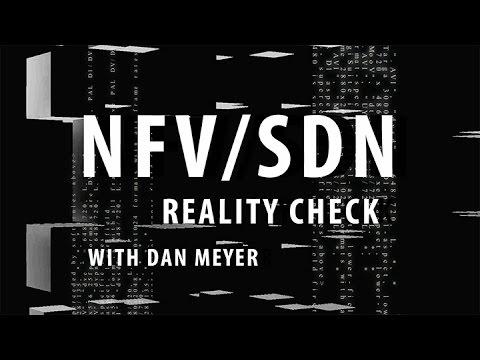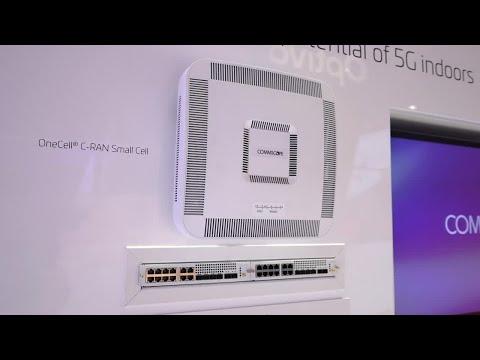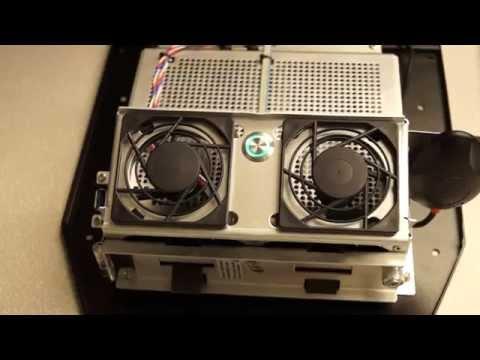NFV/SDN Reality Check: SDN, NFV, 5G And Network QoS – Episode 51
Description
On today’s show we have an interview with Scott Sumner, VP of solutions development and marketing at Accedian Networks on network quality of service needs and challenges related to software-defined networking, network functions virtualization and “5G” technology deployments.
But first, let’s take a look at some of the top headlines from across the telecom-related NFV, SDN, cloud and software space from the past week.
Speaking at this week’s Open Network Summit, John Donovan, chief strategy officer and group president for AT&T Technology and Operations, provided an update on the carrier’s process, which is set to see 75% of its network controlled using software-defined networking and network functions virtualization technology by 2020. Donovan reiterated the carrier’s previous comments that it had hit 5.7% control at the end of 2015, which was ahead of its forecast 5%, and was on its way to 30% control this year.
“As of today, 14 million wireless customers are on our fully virtualized mobile packet core, with millions more being migrated in 2016,” Donovan said. “These are examples of how virtualization touches every part of our network transformation.”
Further bolstering its plans for the year, Donovan said AT&T was set to begin a trial using the Open Network Operating System project’s central office re-architected as data center platform, with the carrier stating the CORD platform would be used to accelerate the roll out of its GigaPower broadband service. The Open Networking Lab, which is shepherding the CORD platform, earlier this week said it would showcase various CORD use cases, including Mobile Cord, which is said to integrate disaggregated and virtualized radio access network, evolved packet core and mobile edge computing to target “5G” technology moves.
AT&T is also continuing to drive innovation across the NFV and SDN space, with Donovan touting the telecom company’s work on its enhanced control, orchestration, management and policy project, which AT&T said is designed to automate network services and infrastructure running in a cloud environment. Donovan said AT&T has been working on ECOMP for nearly two years, tackling the project due to a lack of guidance for NFV and SDN deployments in a wide area network environment. ECOMP is said to provide automation support for service delivery, service assurance, performance management, fault management and SDN tasks. The platform is also designed to work with OpenStack, though Donovan noted it was extensible to other cloud and compute environments.
“A system like ECOMP is very powerful as it allows us to build our next-generation cloud-based network in a vendor agnostic way, giving us great flexibility for deploying NFV/SDN in our network,” Donovan explained. “As a model-driven platform, this framework costs less than maintaining existing network systems. And it allows us to accelerate the implementation of new services quicker than ever before. ECOMP is one of the most challenging, complex and sophisticated software projects in AT&T’s history.”
AT&T released a white paper on ECOMP in a move to garner commentary and support for the initiative, and said it was “amenable to releasing ECOMP into open source,” following up on previous comments to support the open source community.
Also this week, Ericsson and NEC highlighted their work with NTT DoCoMo’s recently announced multivendor NFV platform.
Ericsson said its platform is based on the Open Platform for NFV network architecture and was used for NTT’s commercial service launch late last week, which the vendor claimed was the first of its kind. The platform is said to provide interoperability and connectivity with any “carrier class virtualized network function” and software-defined networking solution. Ericsson said it also provided system integration and support services for the deployment.
NEC said the NTT deployment also included its NFV solution made up of its virtualized evolved packet core and virtual network function manager. The VEPC is said to virtualize the LTE core network functions, including the mobility management entity, serving gateway and packet data network gateway, with a VNF manager from NEC subsidiary NetCracker handling creation, activation, termination and updating of VNFs.
NTT DoCoMo previously stated its NFV launch would help support stable network operation by improving connectivity when data volume is high, as well as following natural disasters or in the event of hardware failures. The technology is also expected to accelerate delivery of new services by enabling software from multiple vendors and hardware to be combined openly in a mobile network.
Thanks for joining us on this week’s NFV/SDN Reality Check. Make sure to check us out again next week when we will have more news from the ONS event and are scheduled to speak with Quortus to get a primer on mobile edge computing.
























